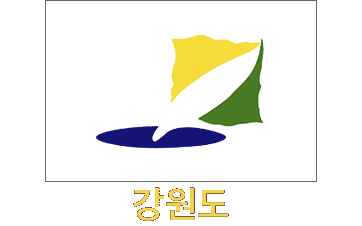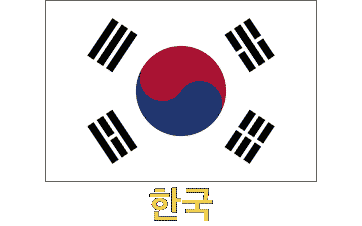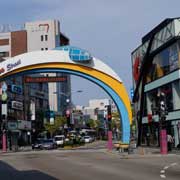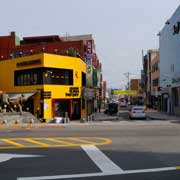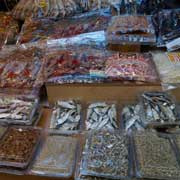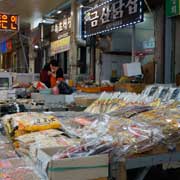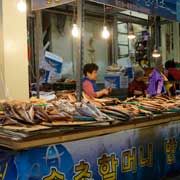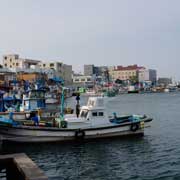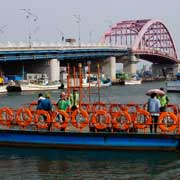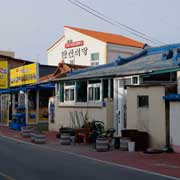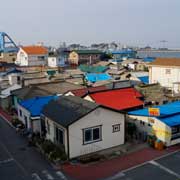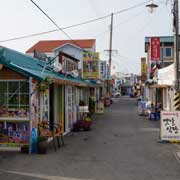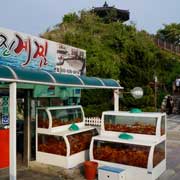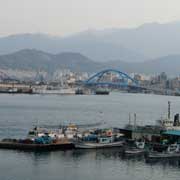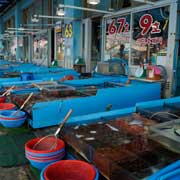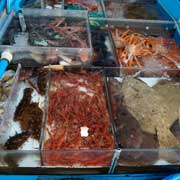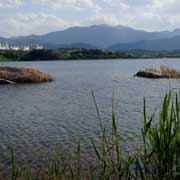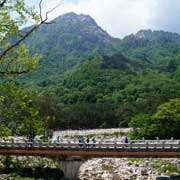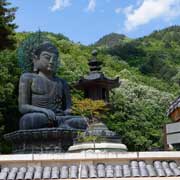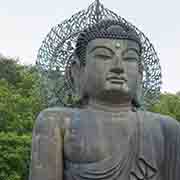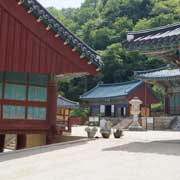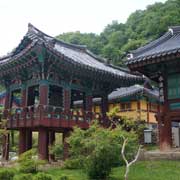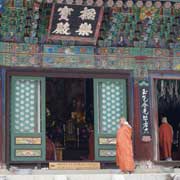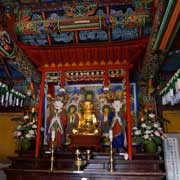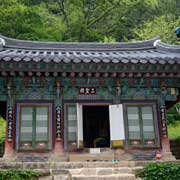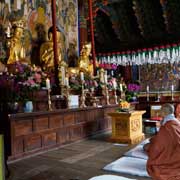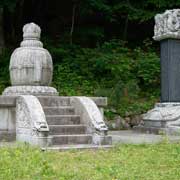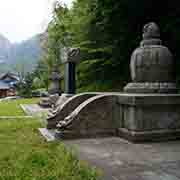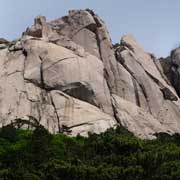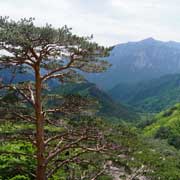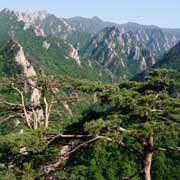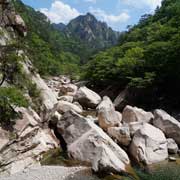Photos of Sokcho and Seoraksan National Park, Gangwon Province, Korea
Sokcho and Seoraksan National Park, Gangwon Province
Sokcho, a city of about 90,000 inhabitants in the far northeast of Gangwon-do (Gangwon Province), is north of the 38th parallel and belonged to North Korea from 1945 until the end of the Korean War. Abai Maeul, a village across the water from the city, still houses North Korean refugees.
you may then send it as a postcard if you wish.
Sokcho has a large and lively Jungang market and is well known for its seafood; especially in Dongmyeong, the northern harbour of Sokcho, are many seafood restaurants with tanks full of live crabs. On a dune overlooking the port and the sea is Yeonggeumjeong Sunrise Pavilion, famous for its magnificent sunrise views. Another unique feature just north of Sokcho is the beautiful Yeongnangho Lake.
Nearby, just to the southwest of the city, is Seoraksan National Park, named after Mount Seoraksan, at 1,708 metres, the third-highest in South Korea. It has beautiful walking trails with scenic valleys, views and caves. At the entrance is Sinheungsa, a head temple of the Jogye Order of Korean Buddhism, with a seated bronze Buddha statue, almost 15 metres tall, called “The Great Unification Buddha Tongil Daebul”. Inside the hollow statue are three pieces of the Buddha’s sari, remains collected after his cremation, donated by the government of Myanmar and the Tripitaka, the original Buddhist scriptures.
